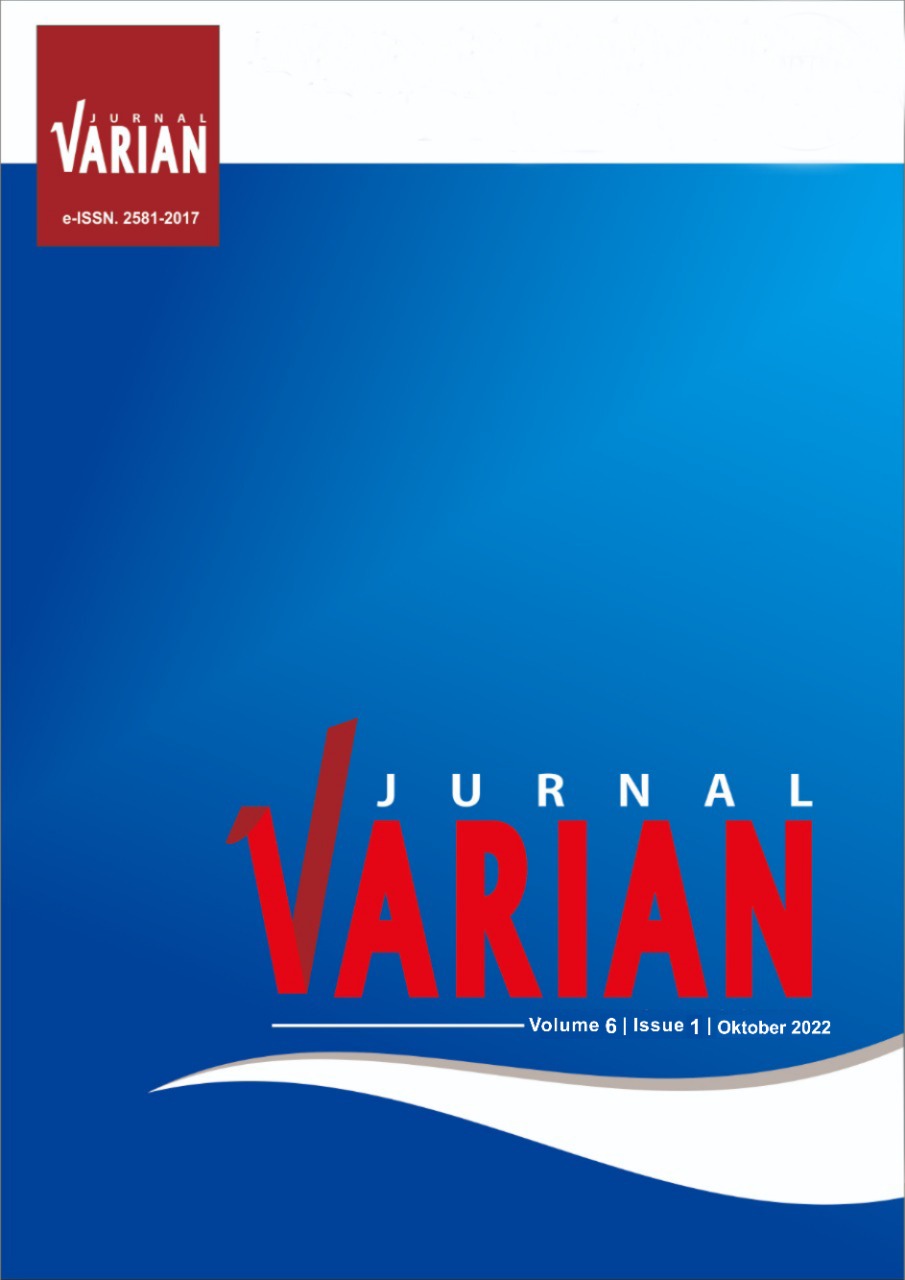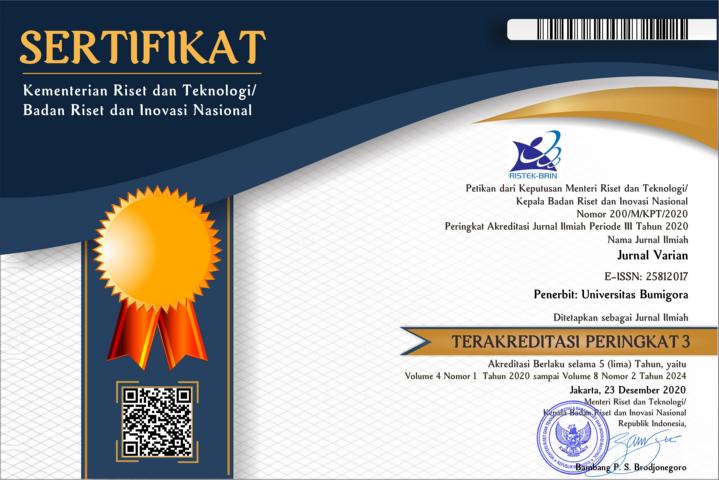Comparison of R and GeoDa Software in Case of Stunting Using Spatial Error Model
Abstract
Gorontalo city is the capital of Gorontalo province which has a high incidence of stunting. This high incidence rate needs to get attention because stunting can further become one of the indicators of the low quality of human resources in Gorontalo. One method that can be used to analyze the factors that cause stunting is the spatial regression method, namely Spatial Error Model (SEM). SEM model can analyze used R and GeoDa software. The purpose of this study is to find out the factors that affect stunting in Gorontalo City and compare the results of the Spatial Error Model analysis based on the results of R and GeoDa software. The results showed that there are two variables that have a significant effect on stunting incidence, namely the variable number of Complete Basic Immunization (IDL) and the amount of proper sanitation. The R and GeoDa software comparison results showed there were several similar outputs i.e. LM test output, parameter estimation and R-square value, while the different outputs were Moran's I test output, Breusch-Pagan test, and AIC value. Although Moran's I test output and Breusch-Pagan’s test are different, but they produce the same conclusion. The AIC value produced by GeoDa is smaller than R software.
References
Teknologi Sepuluh Nupember.
Akolo, I. R. (2022). Perbandingan matriks pembobot rook dan queen contiguity dalam analisis spatial autoregressive model (sar) dan
spatial error model (sem). Jambura Journal of Probability and Statistics, 3(1):11–18.
Angelia, I. O. and Nurhafnita, N. (2020). Optimalisasi pemanfataan lahan pekarangan menggunakan teknik vertikultur untuk budidaya sayuran pencegah stunting pada balita gizi buruk. Jurnal Abdimas Gorontalo (JAG), 3(1):42–45.
Balebu, G. P. P. and Oktora, S. I. (2022). Determinants of leprosy prevalence in sulawesi island using spatial error model. Jurnal
Varian, 5(2):115–124.
Djara, V. A. D., Andriyana, Y., and Noviyanti, L. (2022). Modelling the prevalence of stunting toddlers using spatial autoregressive
with instrument variable and s-estimator. Commun. Math. Biol. Neurosci., 2022:Article–ID.
Fitron, B. N. and Zain, I. (2013). Pemodelan angka putus sekolah usia wajib belajar menggunakan metode regresi spasial di jawa
timur. Jurnal Sains dan Seni ITS, 2(2):D171–D176.
Jaya, I. G. N. M. (2018). Optimalisasi geoda dalam pemodelan dan pemetaan penyakit di kota bandung. Jurnal Pengabdian Kepada
Masyarakat, 2(3):215–219.
Kementerian Kesehatan RI (2020). Laporan Kinerja Direktorat Jenderal Kesehatan Masyarakat,. Ditjen Kesehatan Masyarakat
Tahun 2020.
Khan, J. and Mohanty, S. K. (2018). Spatial heterogeneity and correlates of child malnutrition in districts of india. BMC public
health, 18(1):1–13.
Ningsih, S. and Dukalang, H. H. (2019). Penerapan metode suksesif interval pada analsis regresi linier berganda. Jambura Journal
of Mathematics, 1(1):43–53.
Permatasari, T. A. E., Dayuningsih, and Supriyatna, N. (2021). Pengaruh pola asuh pemberian makan terhadap kejadian stunting
pada balita. Jurnal Kesehatan Masyarakat Andalas, 14(2):3–11.
Pratiwi, L. P. S., Hendayanti, N. P. N., and Suniantara, I. K. P. (2020). Perbandingan pembobotan seemingly unrelated regression–
spatial durbin model untuk faktor kemiskinan dan pengangguran. Jurnal Varian, 3(2):51–64.
Rahmawati, R., Safitri, D., and Fairuzdhiya, O. U. (2015). Analisis spasial pengaruh tingkat pengangguran terhadap kemiskinan di
indonesia (studi kasus provinsi jawa tengah). Media Statistika, 8(1):23–30.
Samadi, H., Asdi, Y., et al. (2017). Penerapan model regresi spasial dalam menentukan faktor-faktor yang mempengaruhi indeks
pembangunan manusia di kabupaten/kota provinsi sumatera barat. Jurnal Matematika UNAND, 6(4):80–89.
Sarvina, Y. et al. (2017). Pemanfaatan software open source r untuk penelitian agroklimat.

This work is licensed under a Creative Commons Attribution 4.0 International License.


















